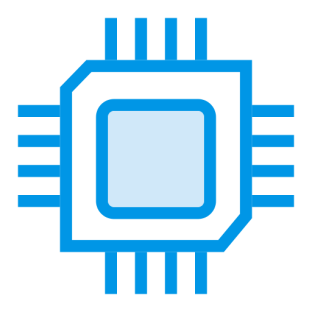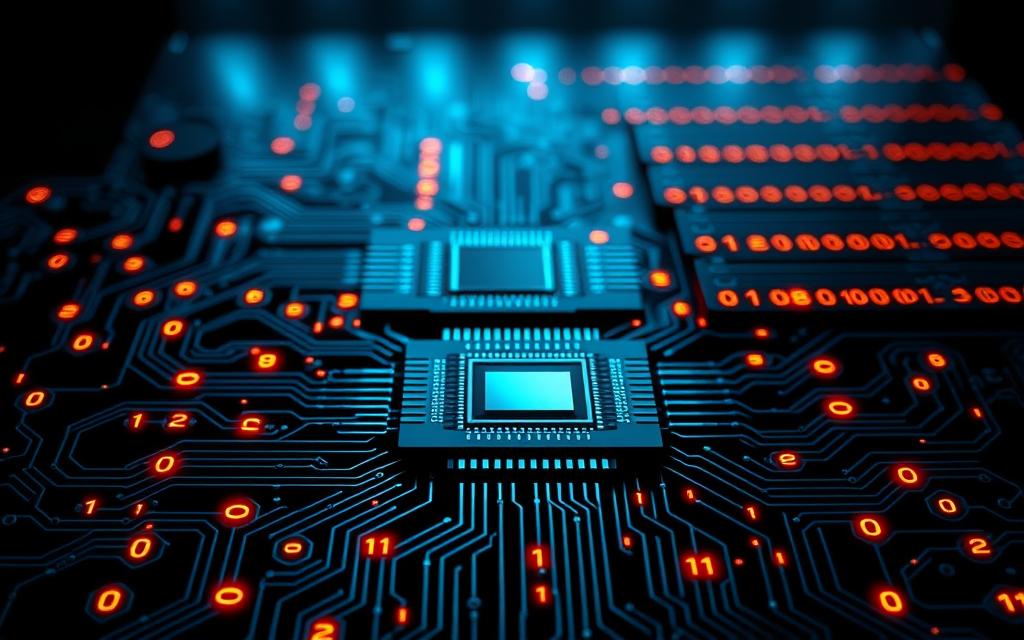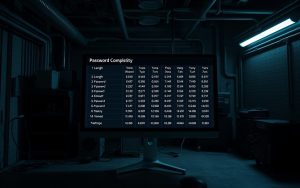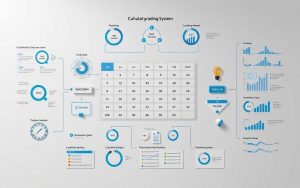Binary is the basic language of digital information in computers. It uses only two digits: 0 and 1. This system creates a powerful way to represent and manipulate data.
Binary provides an efficient method to store and process digital information. Each binary digit, or bit, is the smallest unit of data. It allows complex calculations through simple combinations of zeros and ones.
Digital tech relies on binary because circuits can represent two states: on (1) and off (0). This simplicity lets computers perform fast calculations and store huge amounts of data.
Binary is the backbone of modern computing technology. It’s used in processing units, communication systems, and data storage. The system powers complex algorithms and digital communication.
Binary transforms complex information into a language computers understand. It reveals the simple mechanism behind our digital world. This system allows universal comprehension and manipulation of data by computers.
Understanding the Fundamentals of Binary System
The binary system simplifies complex information into its basic form. It’s the foundation of digital communication. Binary digits are crucial in modern computing, changing how we handle data.
What Are Binary Digits (Bits)?
A bit is the smallest data unit in computing. It uses only two values: 0 and 1. These simple digits create the basis for all digital communication.
Bits represent electrical states (on/off). Eight bits combine to form one byte. Bytes can represent up to 256 different characters.
- Bits represent electrical states (on/off)
- Eight bits combine to form one byte
- Bytes can represent up to 256 different characters
The Base-2 Number System Explained
The base-2 system uses only two digits. Each position in a binary number represents a power of two. This creates a unique way of showing numerical values.
| Binary Value | Decimal Equivalent | Bit Representation |
|---|---|---|
| 01101000 | 104 | 8-bit sequence |
| 11111111 | 255 | Maximum 8-bit value |
Binary vs. Decimal Number Systems
Binary and decimal systems differ in their digit range. Decimal uses ten digits (0-9), while binary uses just two (0 and 1). This simplicity allows for efficient digital processing and storage.
Why Is Binary Number System Used in Computers
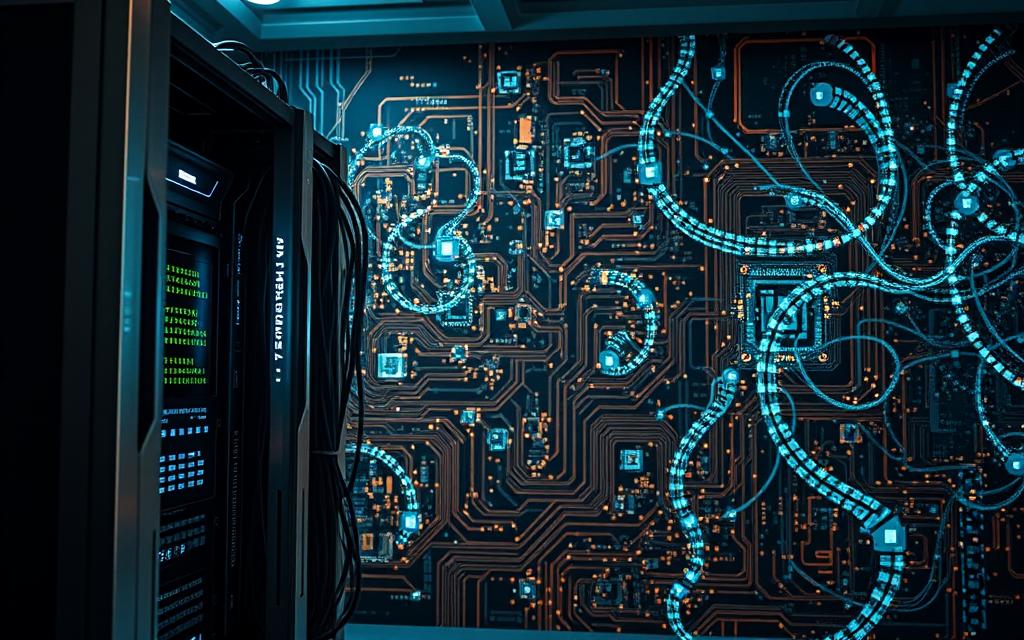
The binary number system is key to digital processing in modern computing. It uses only two values: 0 and 1. These values match computer logic circuits that work through on/off states.
Binary in computing offers several key benefits. It’s simple to represent and process electronically. It’s also reliable in digital systems and allows precise data manipulation.
- Simplicity of representation
- Efficient electronic processing
- Reliability in digital systems
- Precise data manipulation
Computer processors rely on binary digits (bits) for complex calculations. Each bit represents a single value of either 1 or 0. This translates into powerful computational abilities.
A byte, made up of eight bits, can represent 256 different characters. This makes binary a versatile system for data representation.
Digital processing uses binary to encode, store, and send information. Binary code enables complex tech operations. It does this by reducing data to simple on/off states.
Binary is the universal language of computers, transforming intricate information into a sequence of zeros and ones.
Binary can represent vast amounts of information with just two values. This makes it the foundation of modern computational technology. Its simplicity is what gives it such power and versatility.
How Binary Numbers Work in Computing
Computers use binary numbers as their basic language. This system turns complex info into simple 0s and 1s. It allows for precise data processing and storage.
Binary conversion changes decimal numbers into machine-readable format. Each binary digit, or bit, is either 1 or 0. These bits form the building blocks of digital information.
Converting Decimal to Binary
Binary conversion involves dividing decimal numbers by two and tracking remainders. For instance, decimal 10 becomes binary 1010. Each division creates a binary digit from the remainder.
The final binary number is read from bottom to top.
- Decimal number 10 converts to binary as 1010
- Each division creates a binary digit from the remainder
- The final binary number is read from bottom to top
Binary Arithmetic Operations
Binary arithmetic uses only two digits for calculations. Computers break complex computations into simple binary operations. These include additions, subtractions, and logical manipulations.
| Decimal | Binary | Operation |
|---|---|---|
| 5 | 0101 | Basic Number |
| 3 | 0011 | Addition Input |
| 8 | 1000 | Binary Sum |
The Role of Bytes in Data Storage
Bytes are crucial for data storage. Each byte has 8 bits. This setup allows computers to represent up to 256 different characters.
Bytes enable complex data representation across digital systems. Multiple bytes combine to store larger pieces of information.
- One byte can represent values from 0 to 255
- Multiple bytes combine to store larger pieces of information
- Bytes are fundamental to digital memory and processing
Binary Code and Data Representation
Binary code is the basic language of computers. It turns complex info into simple 0s and 1s. Data encoding lets computers use binary digits to work with different types of information.
ASCII is key for character representation in computing. It changes binary numbers into readable text, numbers, and symbols. This system helps computers process information quickly.
- Each character is represented by a unique 8-bit binary code
- ASCII supports 128 standard characters
- Binary numbers can translate to letters, numbers, and control functions
Take the binary number 01101000. In ASCII, it stands for the lowercase letter ‘h’. This shows how binary code turns digital signals into info we can understand.
Binary code also handles complex media types. It encodes digital audio, video, and images as binary data. This lets computers store and work with lots of information precisely.
| Binary Value | Decimal Equivalent | Character/Meaning |
|---|---|---|
| 01101000 | 104 | Lowercase ‘h’ |
| 11111111 | 255 | Maximum 8-bit value |
Today’s computing relies on binary encoding for many tasks. It’s used in simple text docs and complex machine learning algorithms. Binary is the foundation of digital information processing.
Applications of Binary in Modern Computing
Binary has transformed how computers handle information. This simple two-digit system powers our complex digital world. It’s the foundation of all digital systems.
Modern computing relies heavily on binary systems. These systems are crucial in various areas of technology.
- CPU operations that execute complex computational tasks
- Digital communication networks transmitting global data
- Computer memory storage mechanisms
- Encryption and security protocols
Computer Processing Units
CPUs work through binary instructions. Each task breaks down into sequences of binary code. This allows microprocessors to calculate quickly and accurately.
Every mathematical operation translates into a series of binary switches. These switches determine the outcome of computations.
Digital Communication Systems
Digital communication depends on binary encoding. When you send a message, it turns into binary signals. These signals travel through complex network systems.
Binary transmissions ensure data stays intact over long distances. This enables instant global communication.
Data Storage and Memory
Computer memory systems use binary to store and retrieve information. Binary code allows for efficient data compression and retrieval. This applies to RAM, hard drives, and other storage devices.
A single byte can represent up to 256 unique characters. This shows how much information binary can store in a small space.
Binary: The universal language that powers our digital world.
Benefits of Using Binary in Computer Systems
Binary is the foundation of modern computing. It offers amazing advantages for data representation. Binary provides unmatched efficiency and reliability for digital systems.
Computers use binary code for its simplicity and power. Binary digits represent basic computations. This allows complex information to be processed with great accuracy.
- Reduced Hardware Complexity: Binary requires fewer electronic switches
- Enhanced Data Accuracy: Minimizes interpretation errors
- Universal Data Representation: Can encode text, images, sound
Binary’s clear-cut nature leads to digital reliability. With only two states, computers can spot and fix errors easily. This makes binary systems more reliable than multi-state ones.
Binary: The universal language that transforms complex information into precise digital communication.
Binary’s scalability enables advanced computing processes. It’s the building block for many digital innovations. From cryptographic algorithms to machine learning, binary is essential.
Conclusion
Binary technology is the backbone of modern computing. It uses just two digits—0 and 1—to power complex processes in our digital world. From phones to supercomputers, binary is crucial for processing, storing, and communicating information.
The binary system’s versatility goes beyond traditional computing. It’s vital in AI, quantum computing, and advanced cryptography. Machine learning, digital networks, and encryption all use binary’s core mechanism.
Understanding binary is key for tech professionals and innovators. It translates complex tasks into simple on/off states, driving technological progress. Binary powers data processing, graphics rendering, and sophisticated algorithms.
Binary will remain the foundation of our digital ecosystem. Its efficiency and universal use ensure its place in future innovations. This two-digit system will continue to shape technology for years to come.
